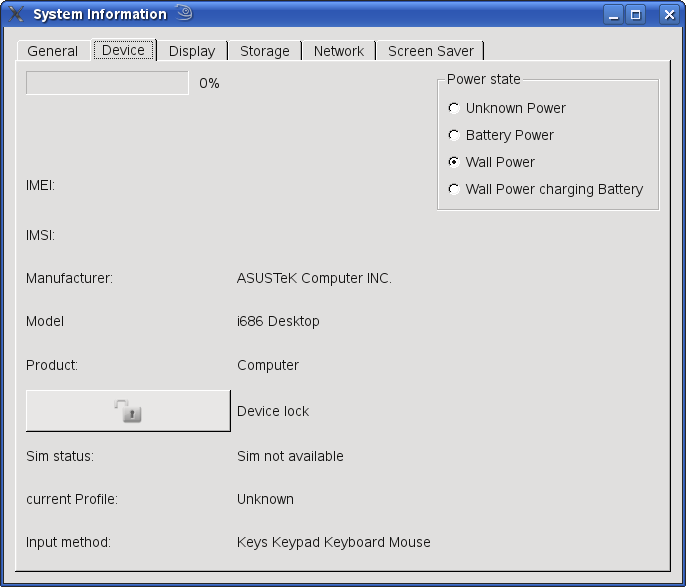System Information Example
Files:
- sysinfo/dialog.cpp
- sysinfo/dialog.h
- sysinfo/dialog.ui
- sysinfo/dialog_landscape.ui
- sysinfo/dialog_s60.ui
- sysinfo/dialog_small_landscape.ui
- sysinfo/main.cpp
- sysinfo/examples.qrc
- sysinfo/sysinfo.pro

The System Information example uses a tabbed dialog, with each tab representing a particular type of data: versions, network and so on.
To access the information, the example creates objects belonging to the System Information classes
Access to details of the currently active phone profile | |
Service for applications to synchronize their activity | |
Access to battery and power information from the system | |
Access to device information from the system | |
Access to display information from the system | |
Access to various general information from the system | |
Access to various networking status and signals | |
Access to screen saver and blanking | |
Access to disk storage information from the system |
Here are some examples that show how the example application reads the device information.
The current language
systemInfo = new QSystemInfo(this); curLanguageLineEdit->setText( systemInfo->currentLanguage());
Device information, starting with the battery level
bi = new QSystemBatteryInfo(this); ... chargerTypeChanged(bi->chargerType()); currentBatStat = bi->batteryStatus();
The battery status is an enum, QSystemBatteryInfo::BatteryStatus, that indicates various battery levels and their significance, e.g., QSystemBatteryInfo::BatteryVeryLow.
The manufacturer id and the product name
manufacturerLabel->setText(di->manufacturer()); ... productLabel->setText(di->productName());
Other information is stored as bitwise flags. The following code shows the input methods being determined using flags.
QSystemDeviceInfo::InputMethodFlags methods = di->inputMethodType(); QStringList inputs; if ((methods & QSystemDeviceInfo::Keys)==QSystemDeviceInfo::Keys){ inputs << "Keys"; } if ((methods & QSystemDeviceInfo::Keypad)==QSystemDeviceInfo::Keypad) { inputs << "Keypad"; }
Various capabilities of the device can be found by testing for features. In the example a Feature combo box, on the General tab, has a hard coded list of features. When a listed feature is selected the getFeature() function is called with the index which is handled by applying a test to the corresponding feature.
QSystemInfo::Feature feature; switch(index) { ... case 1: feature = QSystemInfo::BluetoothFeature; ... QSystemInfo si; featuresLineEdit->setText((si.hasFeatureSupported(feature) ? "true":"false" ));